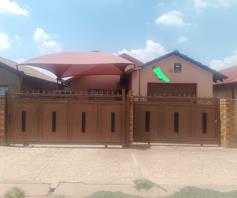A Property24 reader asks

A reader has two questions relating to building on common property and flooding and drainage in their complex.
A reader has two questions relating to building on common property and flooding and drainage in their complex.
Leigh Maingard, Managing Director of Diamond Property Management, a property management business based in Cape Town, advises:
Q 1. Building on common property
Please advise whether if an owner of a sectional title unit increases his or her property onto common property, they will be obliged to pay for the portion of the common property. If so how do you determine the value?
A: An owner will not be allowed to occupy or build on common property unless approved by all the members of the body corporate at a special general meeting. The board of trustees are allowed to enter into a lease agreement, on certain terms and conditions as determined in the Sectional Title Act, with an owner to occupy or use a designated section of the common property. The monthly rental may be determined by the board of trustees and should be market related.
Should an owner wish to build on common property and so increase the size of his section, then the board of trustees need to determine the market value of the section of common property he wishes to purchase. This is normally done by employing a property valuer or estate agent. Once this has been established a special general meeting needs to take place where all the members of the body corporate have to vote unanimously in favour of the sale of the section of common property. The owner, once approved, will need to pay a levy on the additional space he has purchased.
Q 2. Flooding and drainage
Our concreted backyard backs onto a steep hill, there is a 1.2m high wall separating the slope from the yard. However, when it rains, particularly heavily or for a protracted period, the water drains down the incline into our backyard, flooding it for several days and making it unusable. There is a slight incline from our yard to our next door neighbours so it slowly trickles the length of the house into their yard. There are drainage pipes in the wall onto the concrete and the water seeps through the gap between the base of the wall and the concrete as well. We have just installed a patio roof and wanted to put wooden patio furniture out there – now we realise it’s not a good idea because of the wood rotting due to the water. As this is an exclusive use area and not part of the section we bought, should the body corporate be liable for making good the drainage? According to the Act, who would be responsible for implementing and paying for the costs of sorting out the drainage issue?
A: Although the exclusive use area is for the use of the owner, it still remains common property of the body corporate. The drainage is located in the wall and therefore the body corporate would be responsible for maintaining or repairing the drainage if it is not functional.
Readers may submit questions to Property24’s Guest Expert panel and/or comment below. We may not be able to answer all questions received, but all will be considered.







